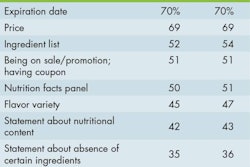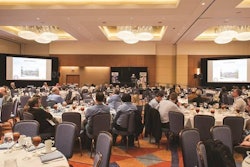Part two of a series: Petfood strategyrevisited
As agreed, Joe Zweiful, chairman of the board of directors of Feed Your Pet Inc., and Justin Case, marketing director, meet to further elaborate on input for strategy sessions. Justin’s premonition that some of the board members did not see the necessity for a new strategy paper proved to be true.
Joe: Shall we start where we left it last time? Your help in putting the board strategy team together was very useful. Although I had some difficulty in convincing some of the shareholders and board members that they were not among the chosen.
Justin: The next step in the process must be answering these questions: Where are we now and how did we get there? This is a—hopefully short—description of the history of the company until today. A synopsis of successes and failures, put on paper to see and understand what we have experienced so far, to learn from. Do not go to the company archives to look for history. The history of the last five years suffices.
From my experience I can say that this is a very useful and often very revealing exercise, because we’re all too eager to think about our successes and to repress our failures. If you ask me, this is an absolute must in our strategy paper. Of course, I added our SWOT analysis to the situation analysis; after all, we need to know what we are today and what we can or must be and do tomorrow. As important is the description of the market in which we already operate and the one in which we aspire to operate.
Back data of a reliable source will be used, but things become trickier once you arrive at the point where you must explain the future. Isn’t looking five years ahead like looking in a crystal ball? And yet we collectively continue to stare into that ball and look upon our staring as providing the ultimate truth. My team and I did not bother too much about the quantification of the future. We concentrated on what we see to be the major trends. And I can tell you that the product development work we carried out so far is in line with these trends.
Joe: I am happy to hear that. You remember that initially, I was a bit apprehensive of the changes you wanted the company to go through; but with what I have learned from you so far, yours is our way to a healthy and prosperous future.
Justin: A few further remarks on the first section of the strategy paper, and whether that belongs under the market analysis is immaterial: our competition. Who are they, what are their SWOTs, what seems to be their strategy? To put it in other words: Who are we going to fight against and what is the state of their armament? We must not select a plethora of enemies, but target a few that we think are vulnerable. History of warfare teaches us that fighting too many battles at too many fronts simultaneously leads to disaster rather than success.
Joe: I got you so far. What else is relevant to talk about?
Justin: One last thing for today: external factors, the ones that influence our business and against which we can’t do anything. These belong in any strategy paper worthy of being called so. Take, for instance, cereal prices. If these have a fluctuating but upward trend, the search for alternative carbohydrates could become a more serious issue for the future than it already is today. Just think of the reformulations that would be needed. The likelihood of occurrence is always a bit of a gamble, but having views on external factors and their influence on our business gives us a good basis for Plan B should we need one.
Joe: I see your point. In the current strategy paper, we have assumed that no change takes place. Come to think of it, that’s a quaint position to take. Somebody once said (I believe it was a Greek chap) that, “Change is the only constant in life.”
Justin: I adhere to that. And let me conclude that what we talked about so far is the inventory of history and the current status. I hope to have the follow-up—how to turn all of this into a plan—ready in a couple of weeks. Let’s not forget when working further: Strategy is not only about adapting to change, which is reactive, but it can also be about giving impetus to change, which you can consider to be proactive. This is what we are heading toward.
21st Pet Street, home of Change Stranamics
















